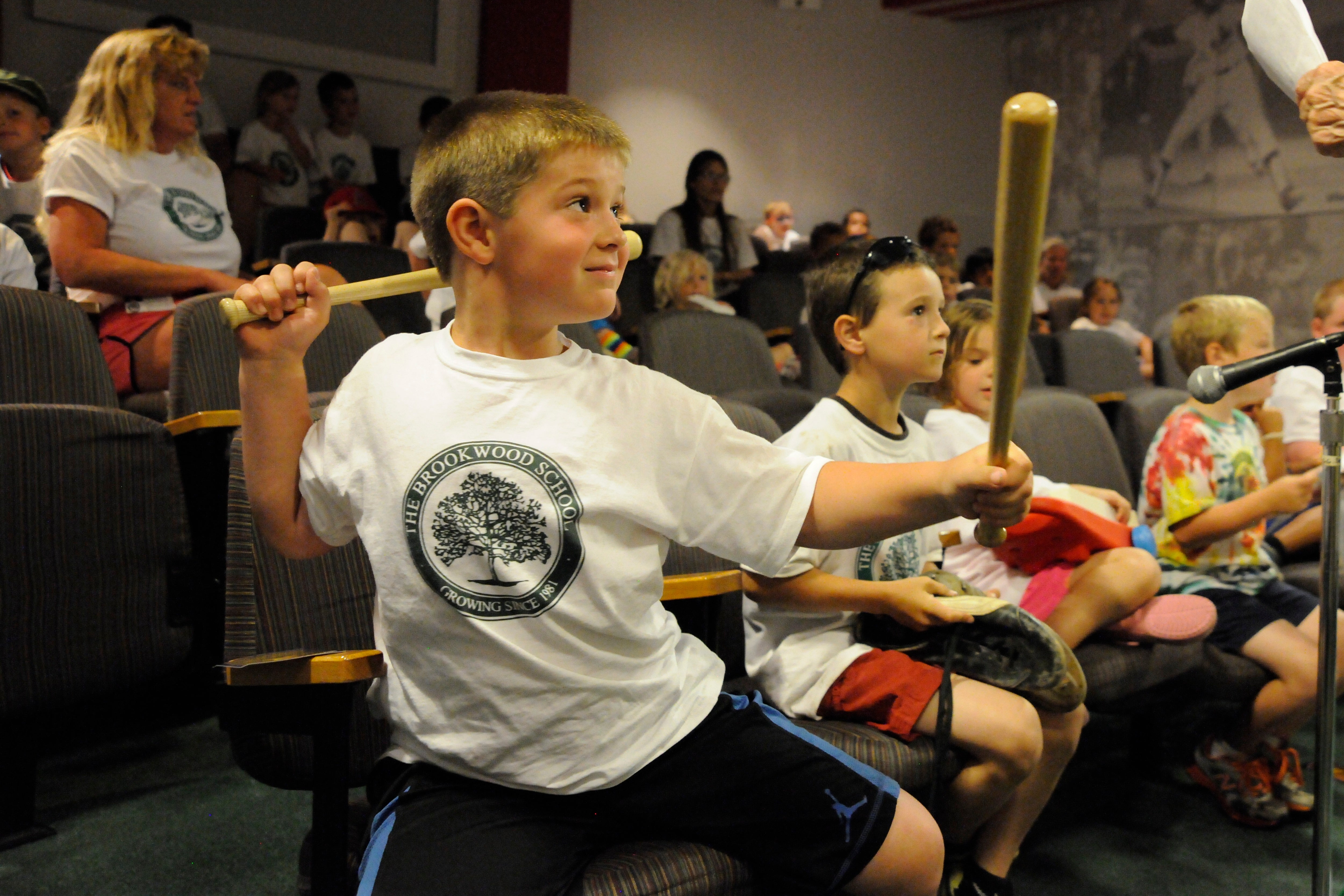In baseball, my theory is to strive for consistency, not to worry about the numbers. If you dwell on statistics you get shortsighted, if you aim for consistency, the numbers will be there at the end.
Hall of Famer Tom Seaver

STATISTICS: BATTER UP!
It's the final day of the 1941 season and Ted Williams' batting average is .39955. What will he do? Sit this one out and guarantee an historic .400 season or take a chance and play while aiming for mathematic immortality? Find the answer to this and other exciting stories in a unit full of whole numbers, fractions and decimals, percentages, proportions and problem-solving. This thematic unit teaches fundamental concepts that connect the calculator and the clubhouse while using and interpreting the statistics of famous ballplayers.
THEMATIC UNIT OBJECTIVE
- Examine how everyday mathematical concepts, such as addition, subtraction, fractions, decimals, etc., apply to baseball and the real world.
- Analyze baseball statistics and interpret data in terms of fundamental mathematic operations.
- Understand the application of baseball statistics and how they are calculated using basic mathematical principles.
ROOKIE (GRADES 3-5)
LESSON 1 (PRE-VISIT): LOOKING AT BASEBALL STATISTICS
Students practice identifying and ordering whole numbers and decimals as they examine statistics on baseball cards.
LESSON 2 (PRE-VISIT): BATTING AVERAGE PART 1: FRACTIONS
Students review prior knowledge of fractions and understand that fractions represent parts of a whole.
LESSON 3 (PRE-VISIT): BATTING AVERAGE PART 2: DECIMALS
Students review prior knowledge of decimal place values, practice converting fractions into decimal form, and round decimal numbers.
LESSON 4: ON-SITE VISIT OR VIDEO CONFERENCE
Students will work with museum teachers to reinforce concepts and ideas introduced in the classroom.
Book your:
LESSON 5 (POST-VISIT): OTHER BASEBALL STATISTICS
Students review that there are many different statistics and averages that show an athlete’s success.
INTERMEDIATE (GRADES 6-8)
LESSON 1 (PRE-VISIT): BATTING AVERAGE
Students learn how to calculate a batting average and review such math concepts as converting fractions to decimals and rounding decimal numbers.
LESSON 2 (PRE-VISIT): BATTING AVERAGE UPS AND DOWNS
Students review prior knowledge of average calculation, and learn how averages can change with the addition of new data.
LESSON 3 (PRE-VISIT): AVERAGES & PERCENTAGES
Students practice converting averages to percentages and vice versa. More advanced students have the option of using basic linear algebra to solve for unknown variables in batting average equations.
LESSON 4: ON-SITE VISIT OR VIDEO CONFERENCE
Students will work with museum teachers to reinforce concepts and ideas introduced in the classroom.
Book your:
LESSON 5 (POST-VISIT): OTHER BASEBALL STATISTICS
Students review that there are many different statistics and averages that show an athlete’s success.
ADVANCED (GRADES 9-12)
LESSON 1 (PRE-VISIT): BATTING AVERAGE
Students will discuss the importance of statistics in baseball. They will learn how to calculate batting average, and review conversion between fractions, decimals, and percentages.
LESSON 2 (PRE-VISIT): SLUGGING PERCENTAGE
Students learn to set up and solve equations for slugging percentage.
LESSON 3: (PRE-VISIT) TEAMS & PLAYERS BY THE NUMBERS
Students review how to find the mean, median and mode of a data set, and learn to calculate standard deviation. Students will also evaluate data using stemplots.
LESSON 4: ON-SITE VISIT OR VIDEO CONFERENCE
Students will work with museum teachers to reinforce concepts and ideas introduced in the classroom. As students tour the Museum they will learn about members of the Baseball Hall of Fame who faced difficult decisions during their careers, and overcame adversity on their way to achieving the highest honor in sports.
Book your:
LESSON 5: (POST-VISIT): FANTASY BASEBALL
This long-term activity allows students the opportunity to apply what they have learned about statistics as they create and track their own fantasy baseball teams. Ideally, students will be able to work on their fantasy baseball teams over several weeks of a given semester.
COMMON CORE STANDARDS
CCSS MATH CONTENT: 3.NBT.A.1, 3.NF.A.1/3, 3.OA.A.2/3/4, 3.OA.B.5/6, 3.OA.C.7, 4.NBT.A.2, 4.NBT.B.6, 4.NF.C.6, 4.OA.A.3, 5.NBT.A.3/4, 5.NBT.B.6, 5.NF.B.3, 5.OA.A.2
EXPLORE OUR CURRICULUM
The Museum currently offers 15 baseball-themed curriculum components that provide interactive and meaningful learning engagement.
PLAN A VIRTUAL FIELD TRIP
The next best thing to visiting the National Baseball Hall of Fame Museum is participating in a Virtual Field Trip. The Museum's award winning programs bring the wonders of Cooperstown to the classroom.
PLAN A FIELD TRIP
The National Baseball Hall of Fame and Museum proudly presents fun-filled, content rich experiences for students from grades 3 to 12. Our field trips are all aligned with National Learning Standards.
EXPLORE OUR CURRICULUM
The Museum currently offers 15 baseball-themed curriculum components that provide interactive and meaningful learning engagement.
PLAN A VIRTUAL FIELD TRIP
The next best thing to visiting the National Baseball Hall of Fame Museum is participating in a Virtual Field Trip. The Museum's award winning programs bring the wonders of Cooperstown to the classroom.
PLAN A FIELD TRIP
The National Baseball Hall of Fame and Museum proudly presents fun-filled, content rich experiences for students from grades 3 to 12. Our field trips are all aligned with National Learning Standards.

